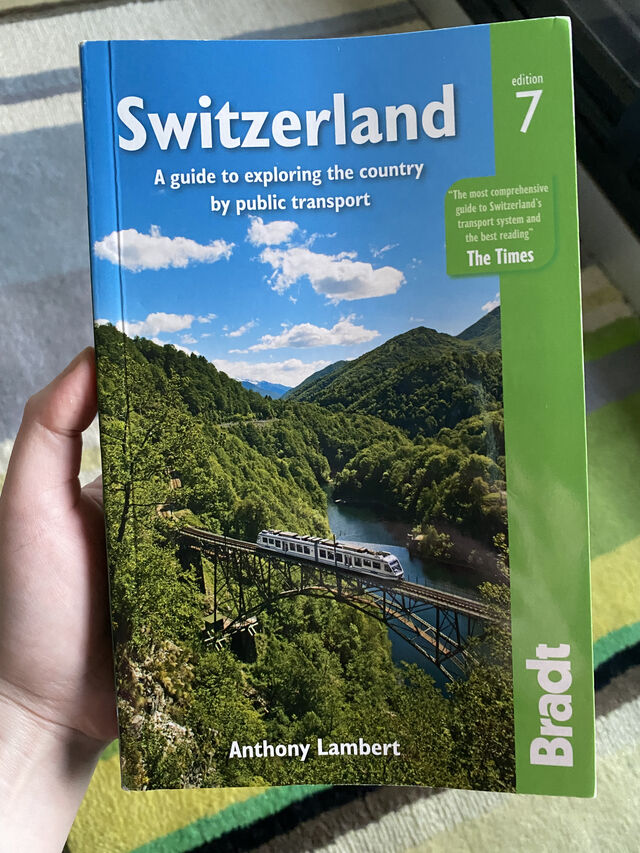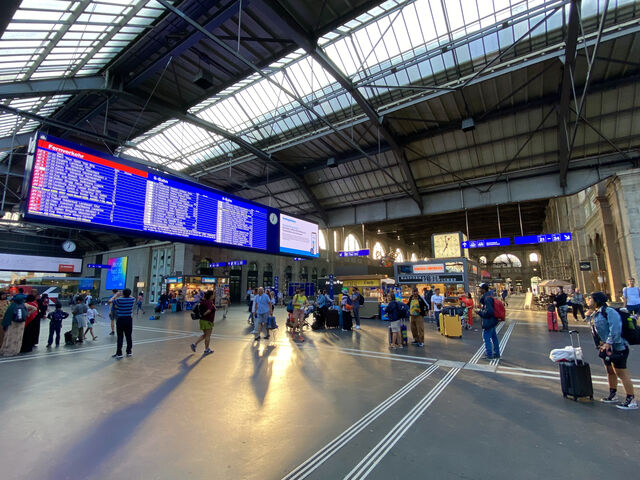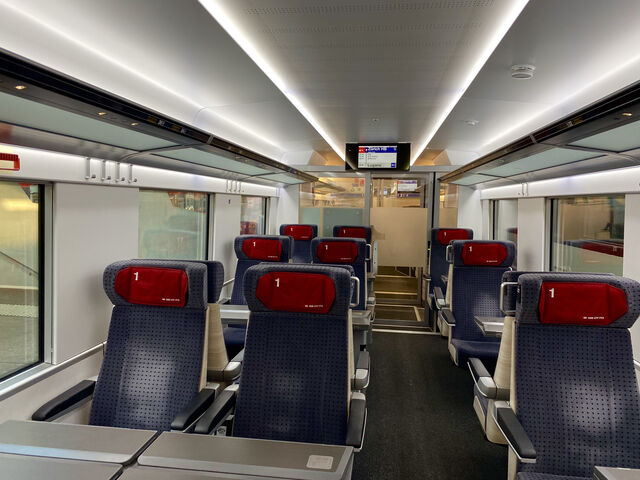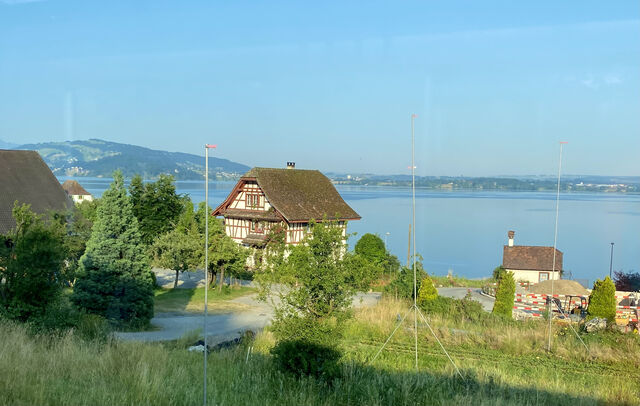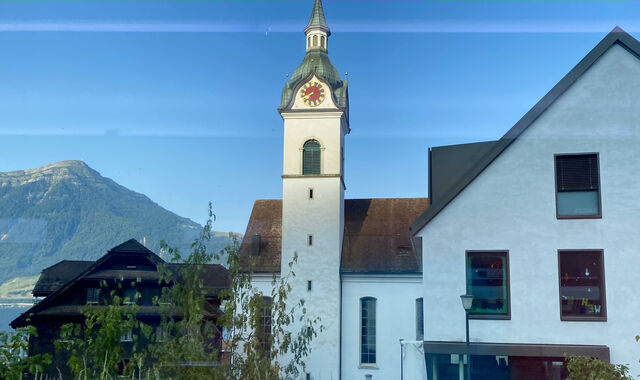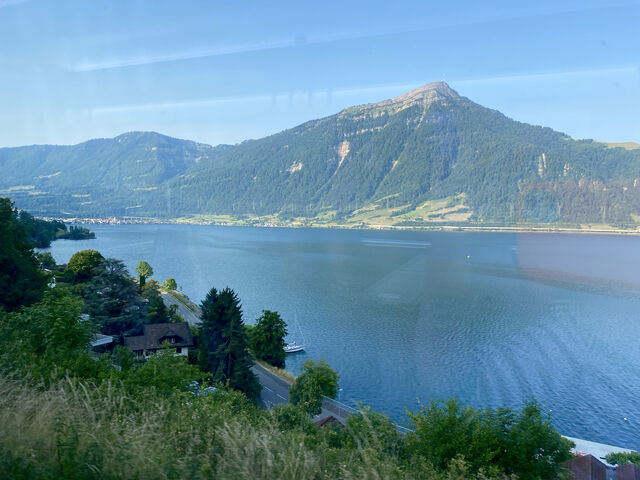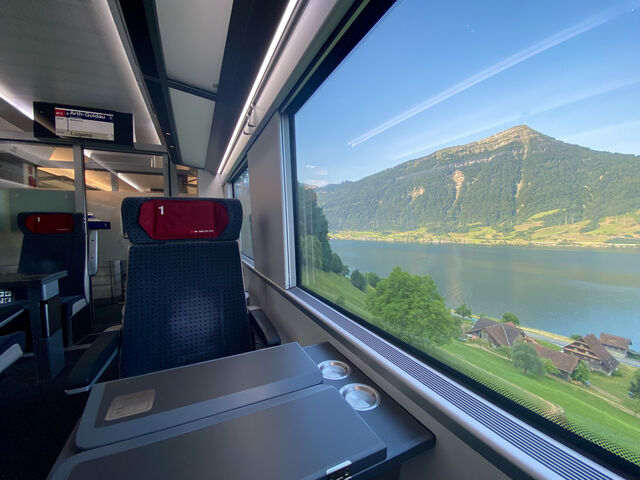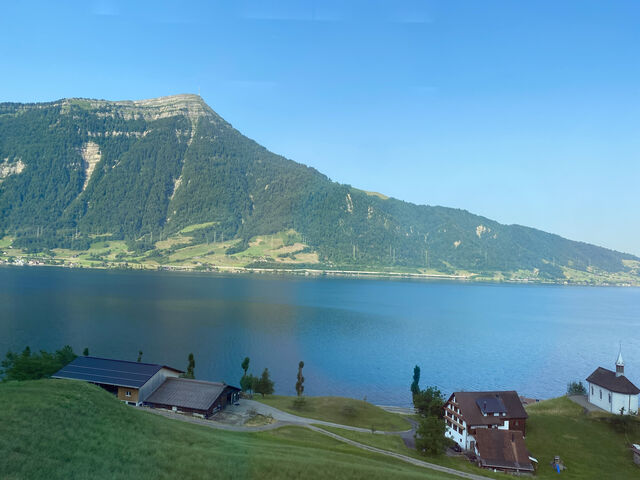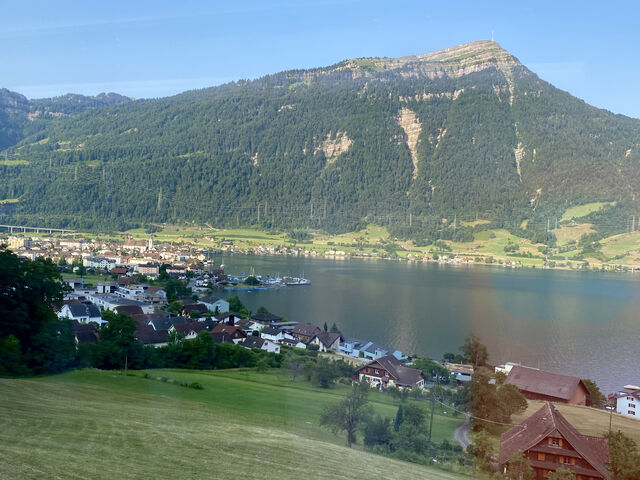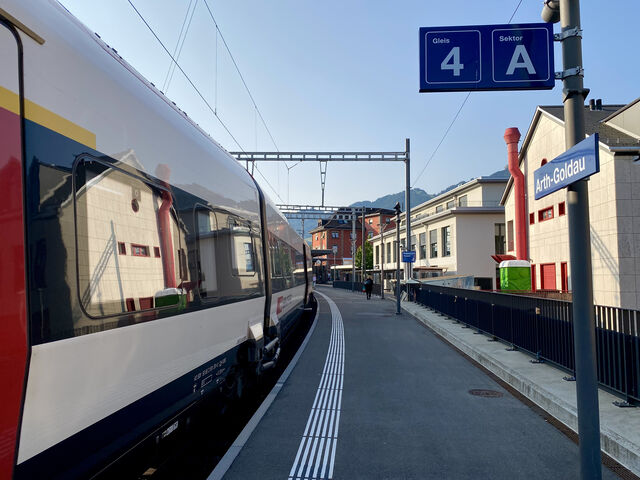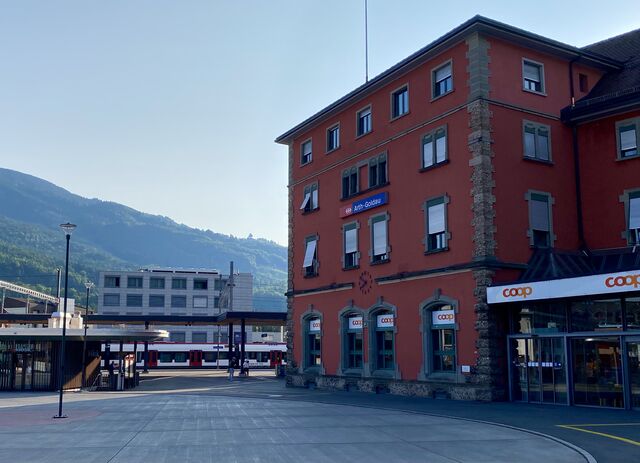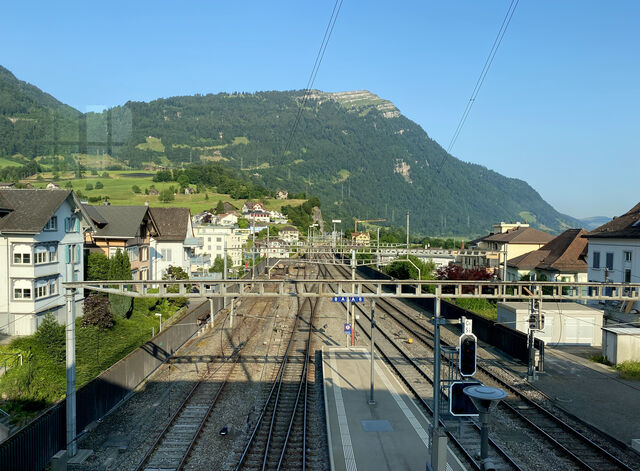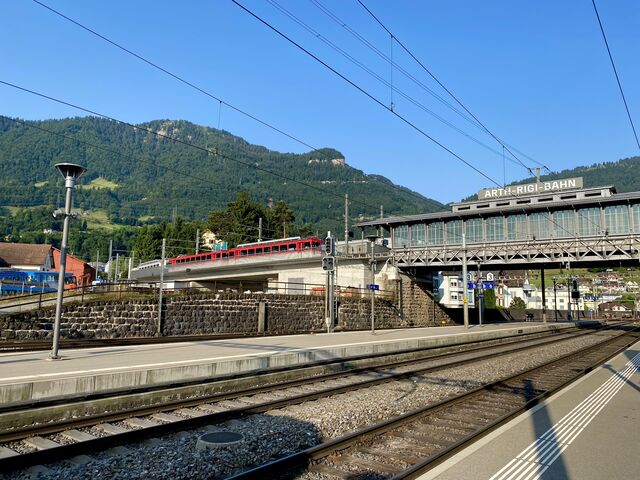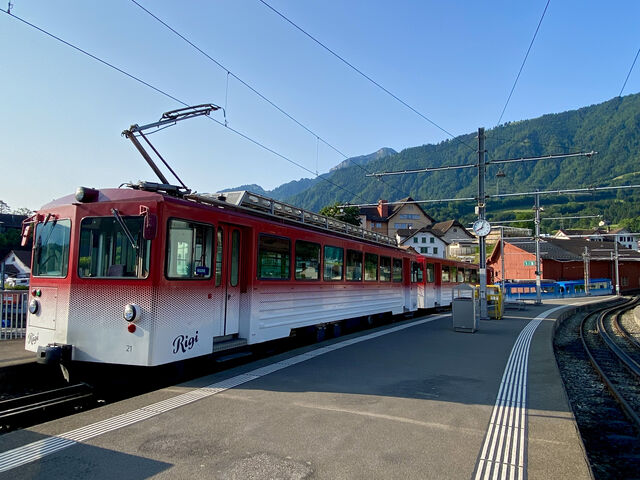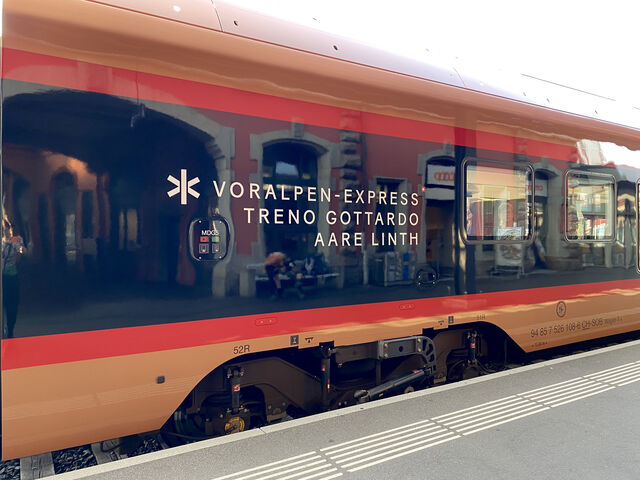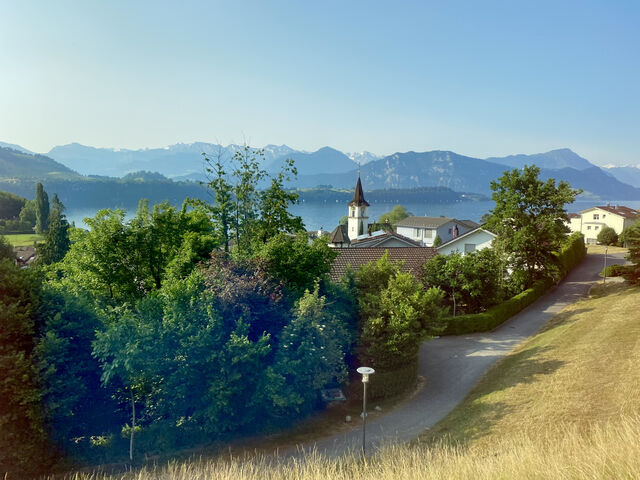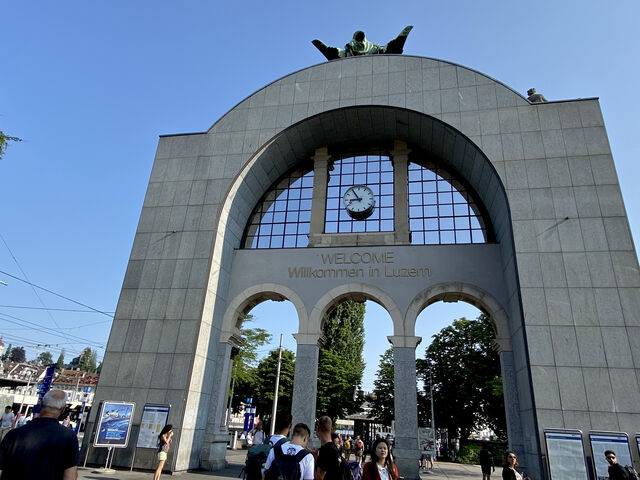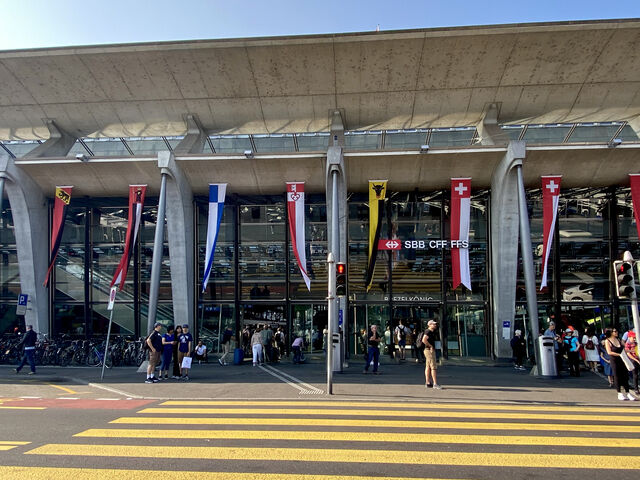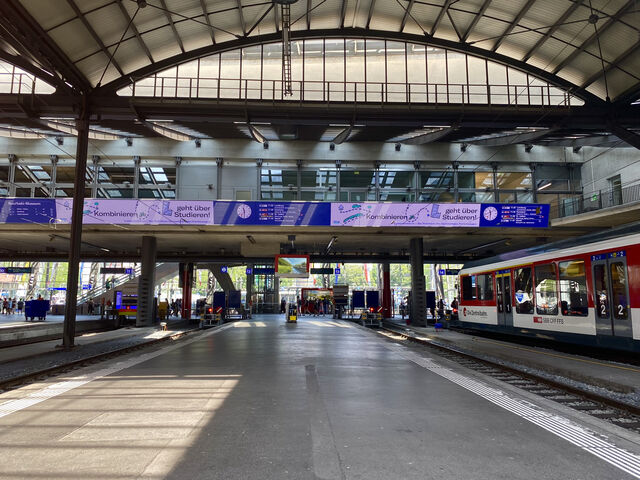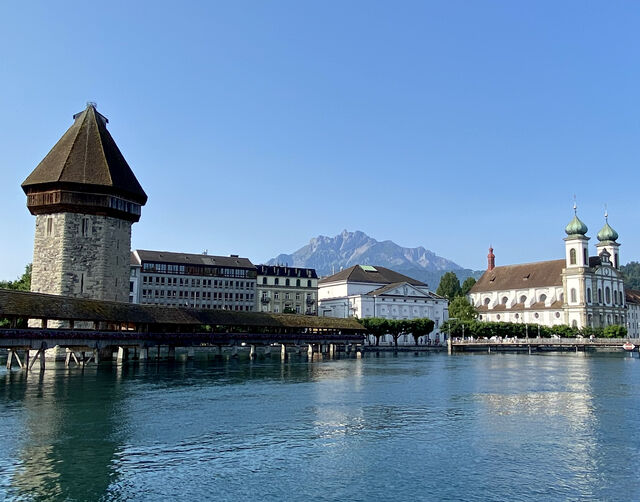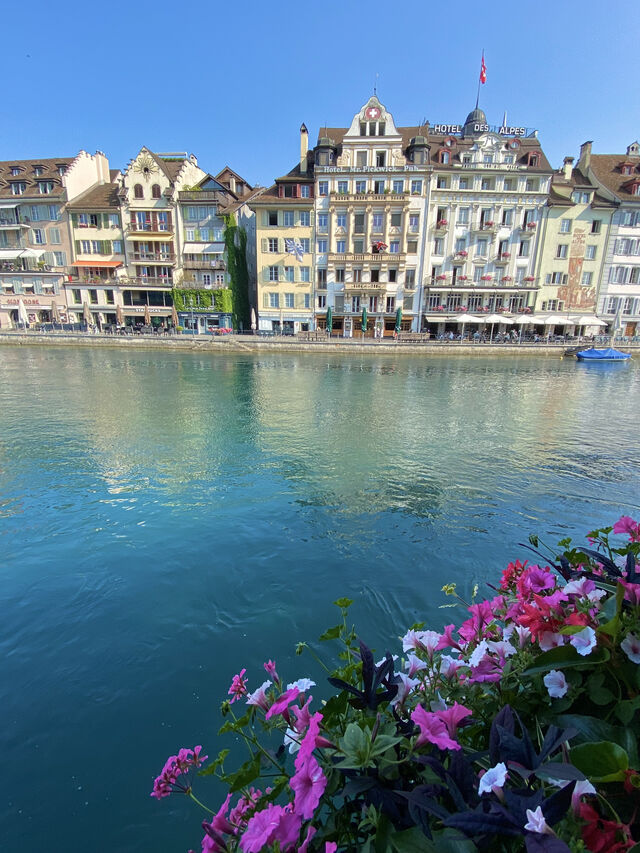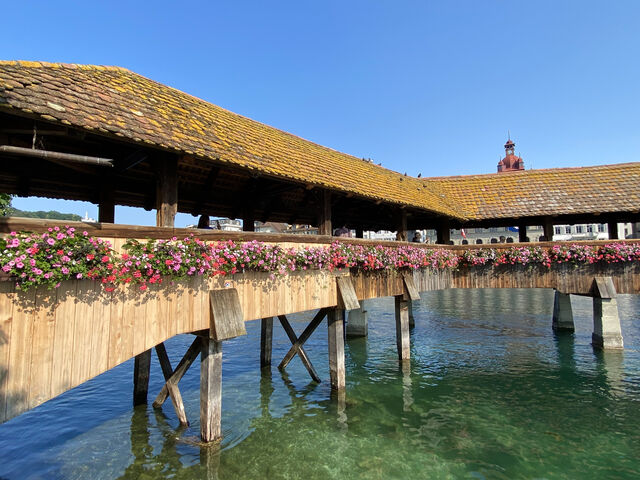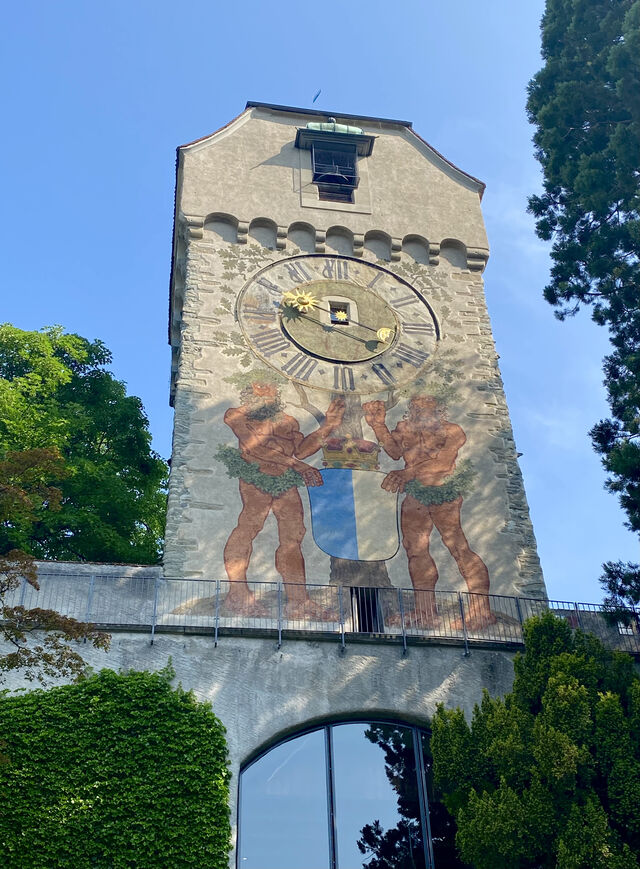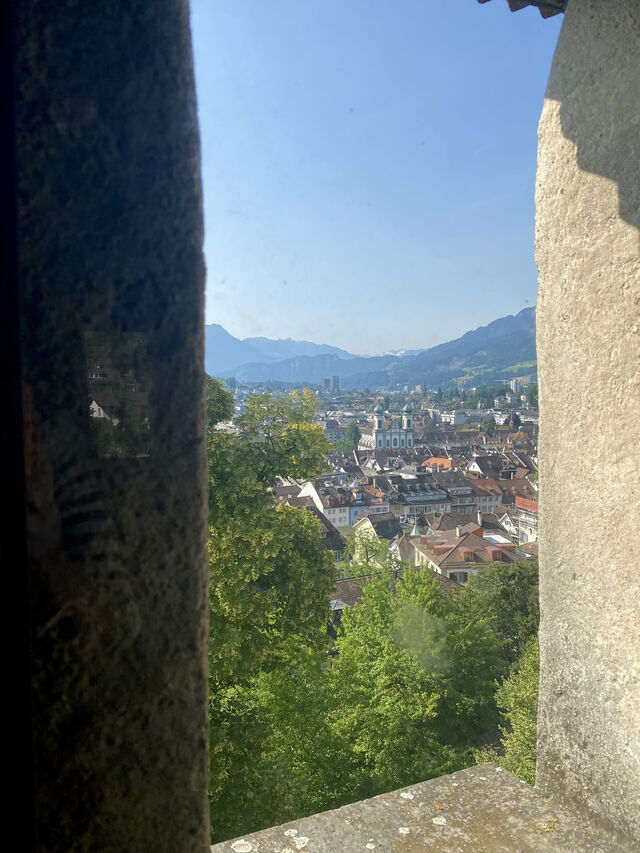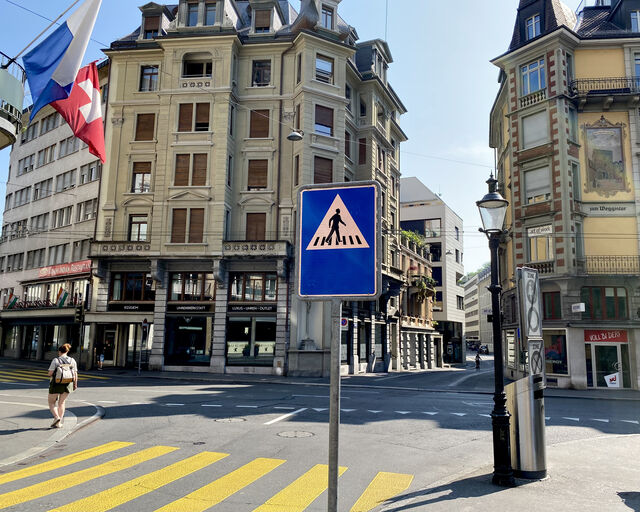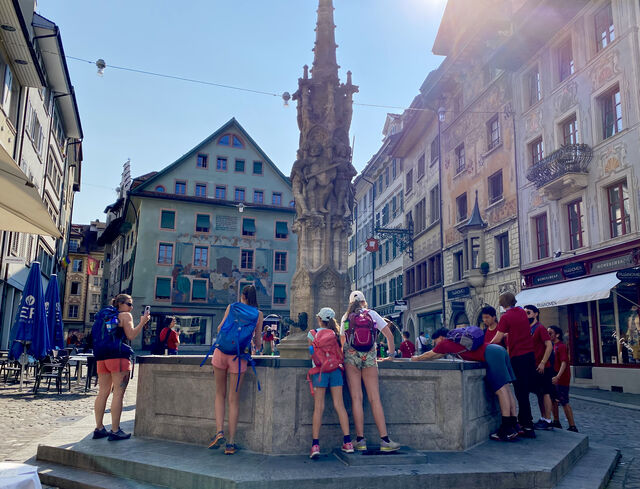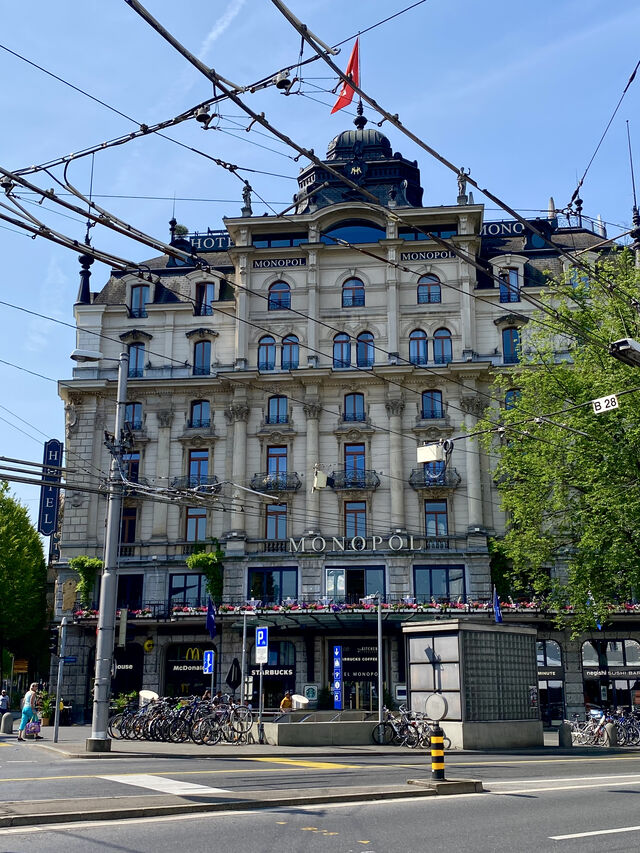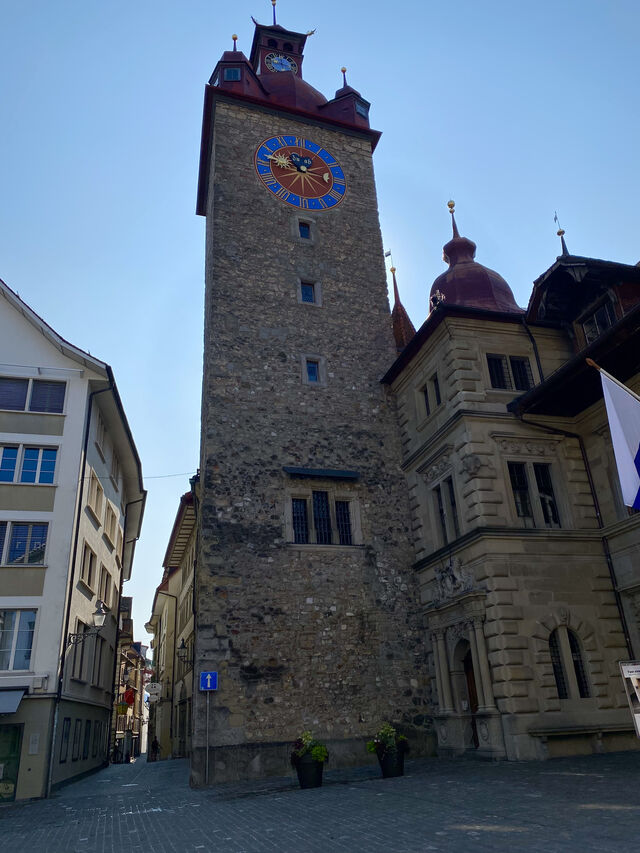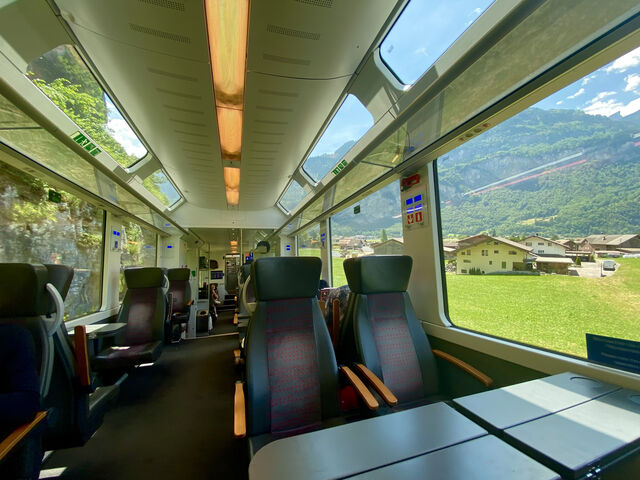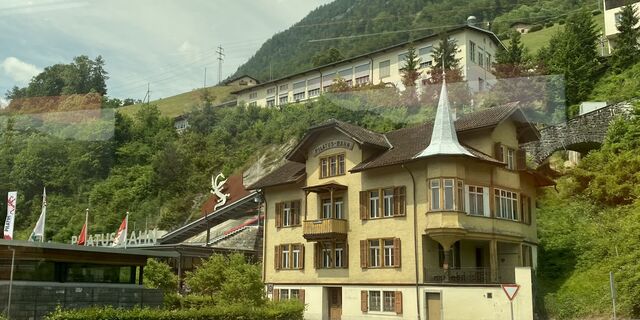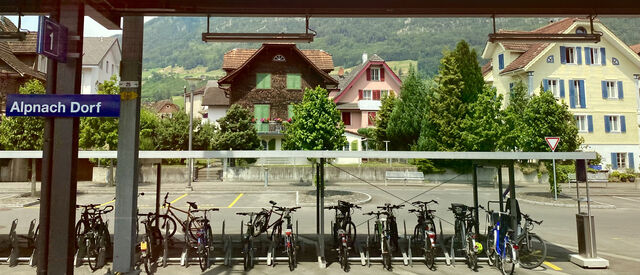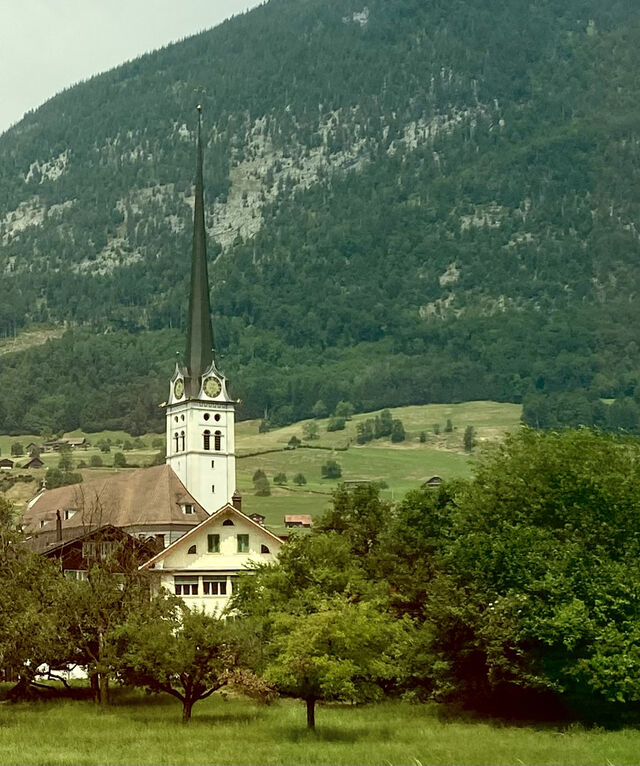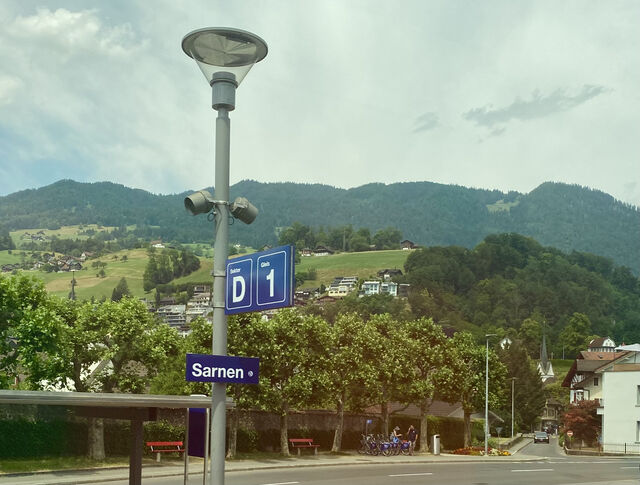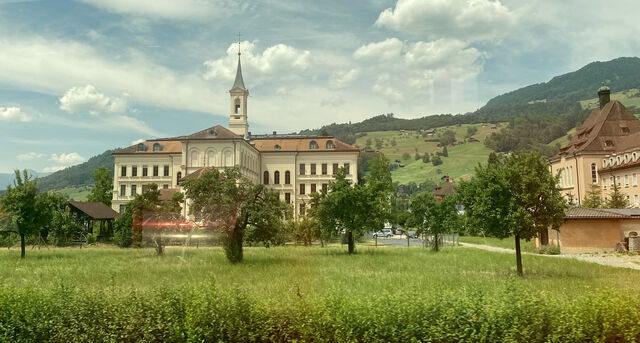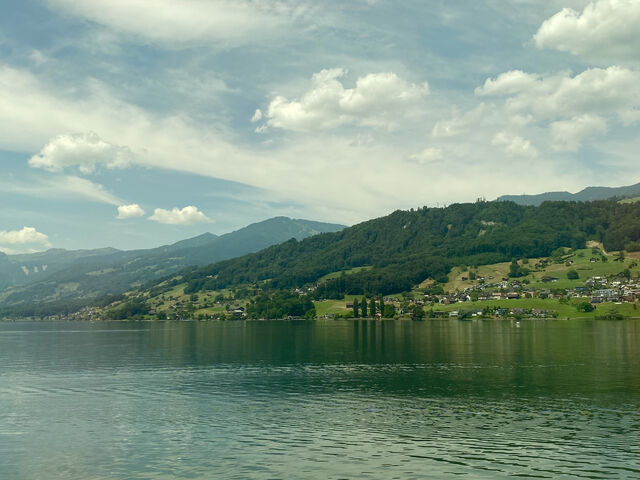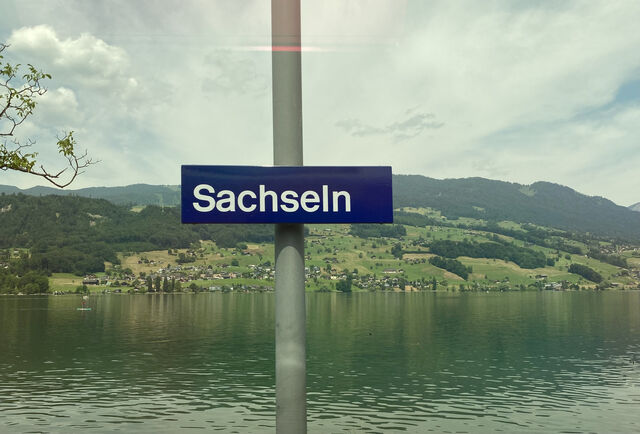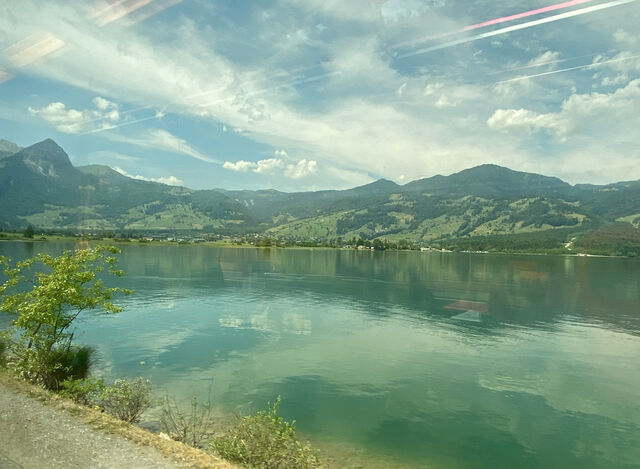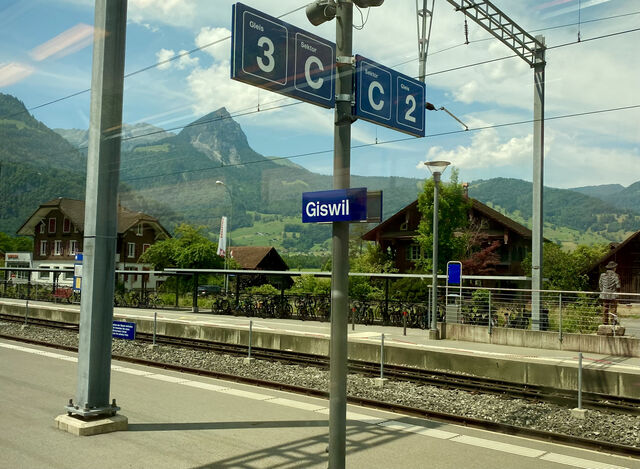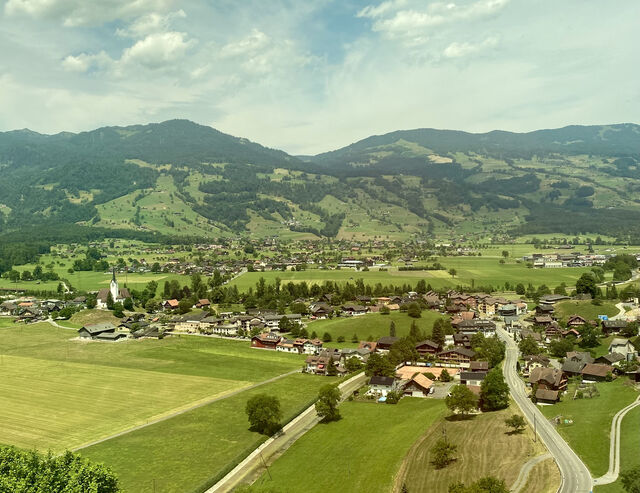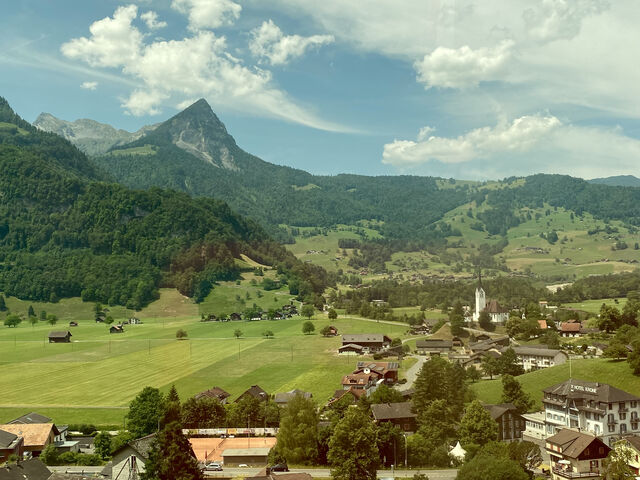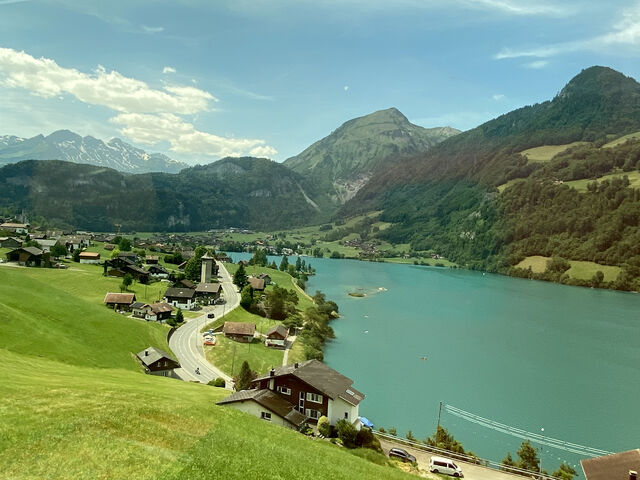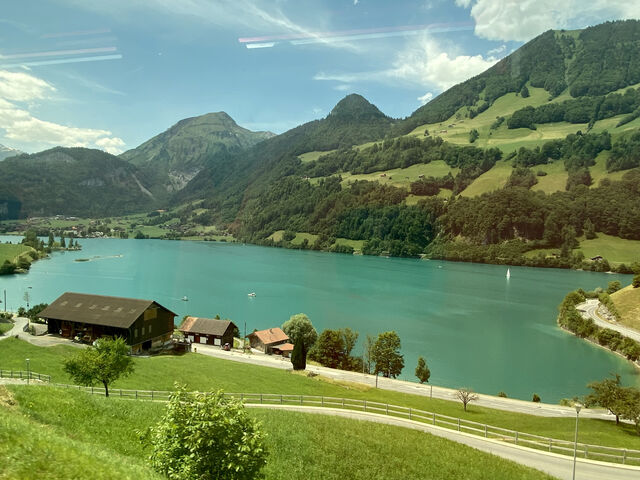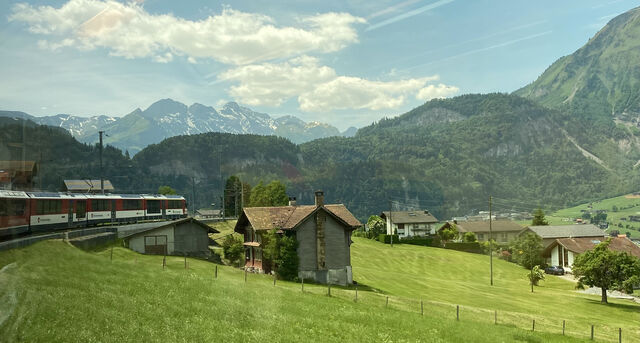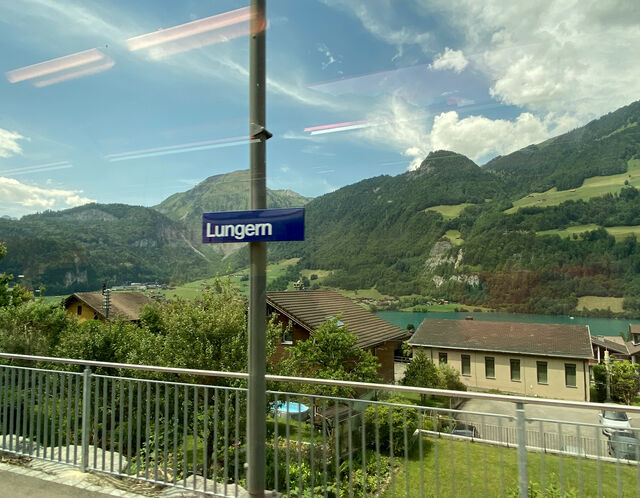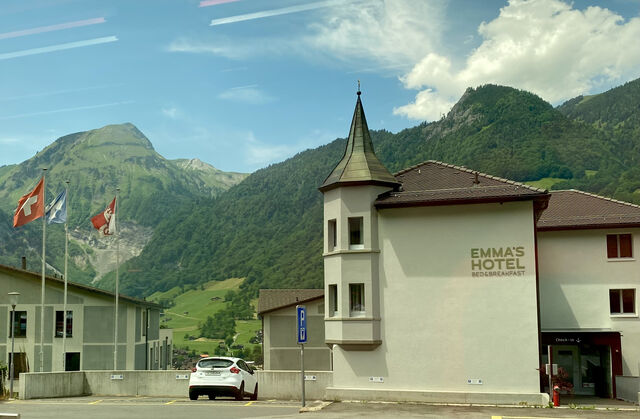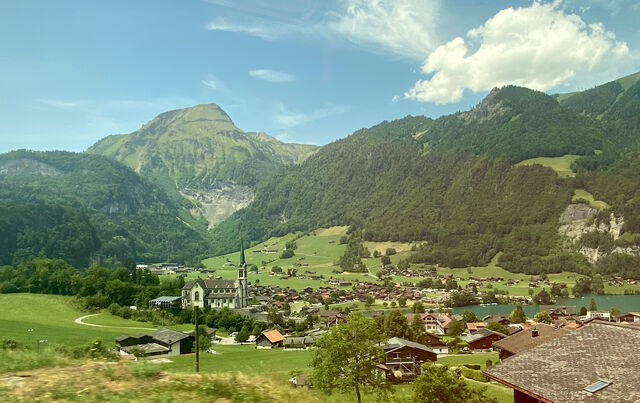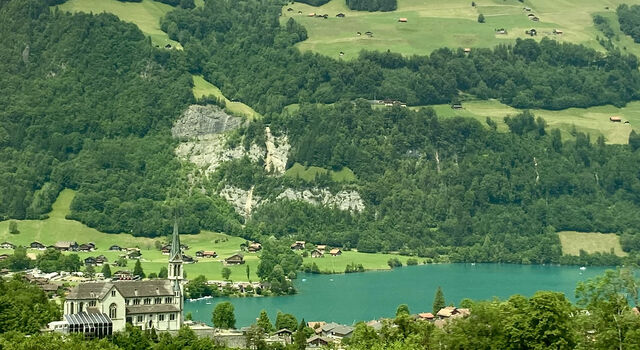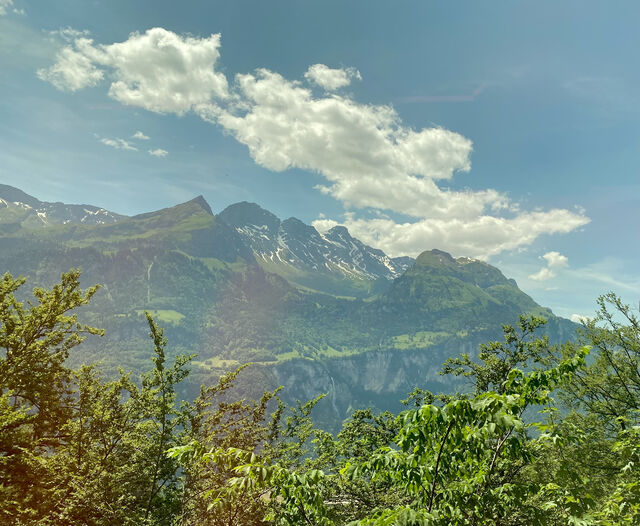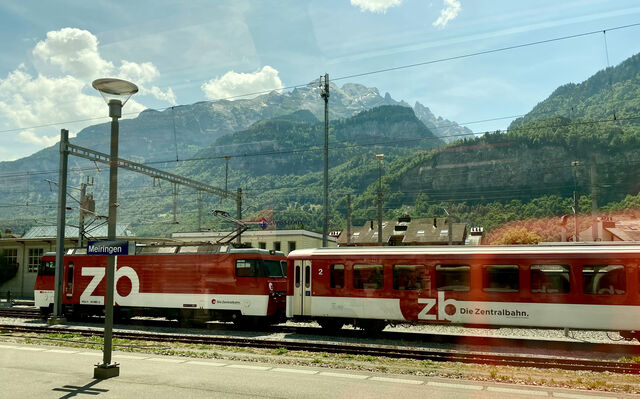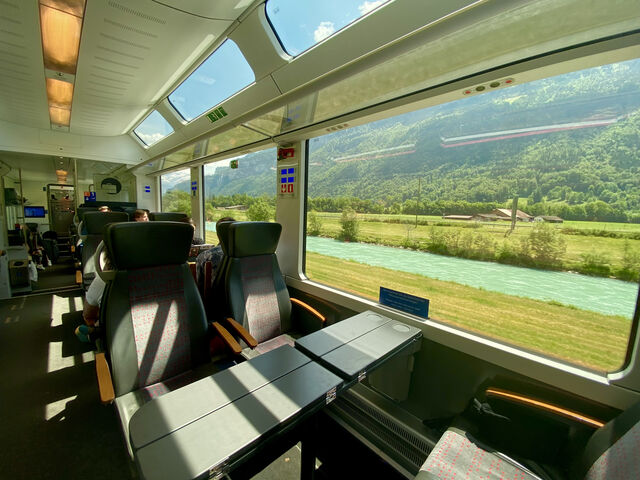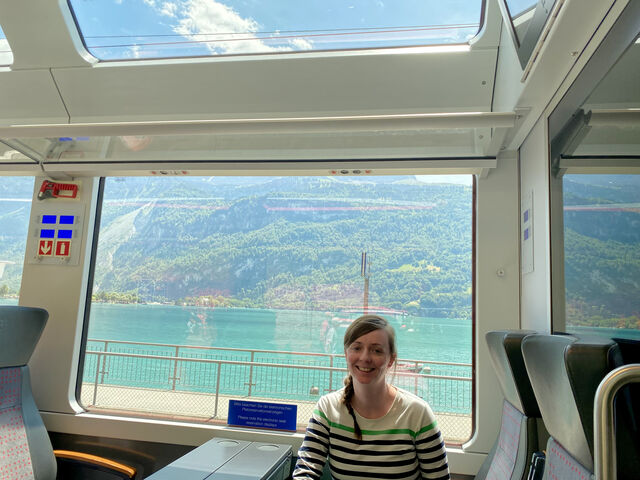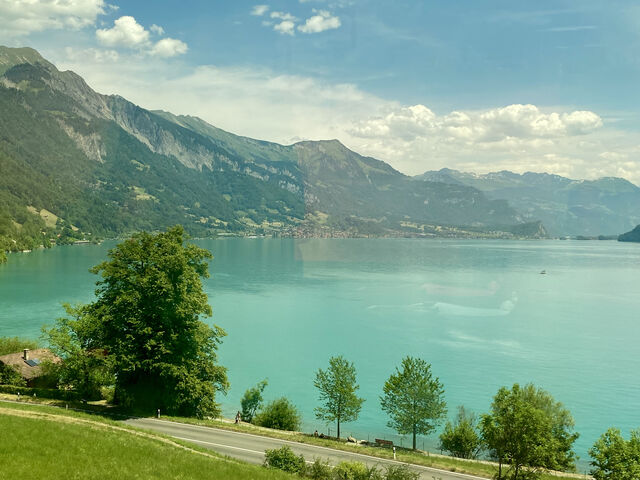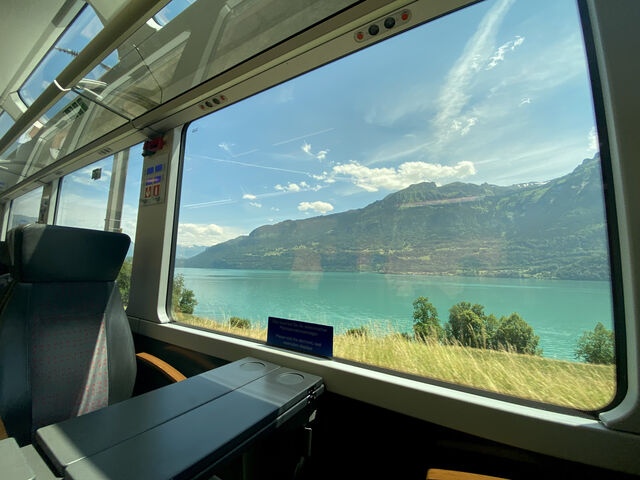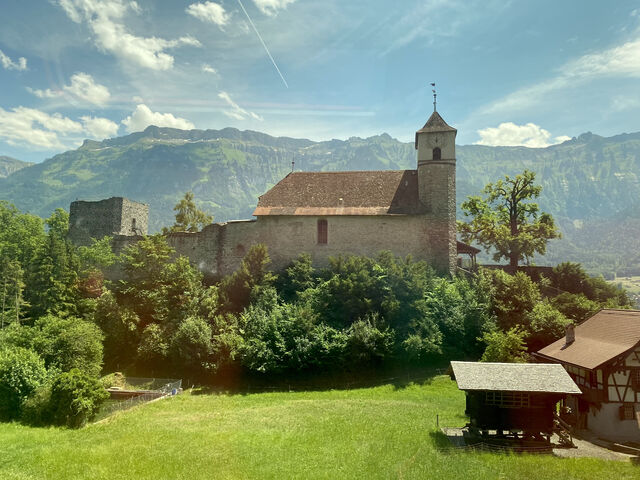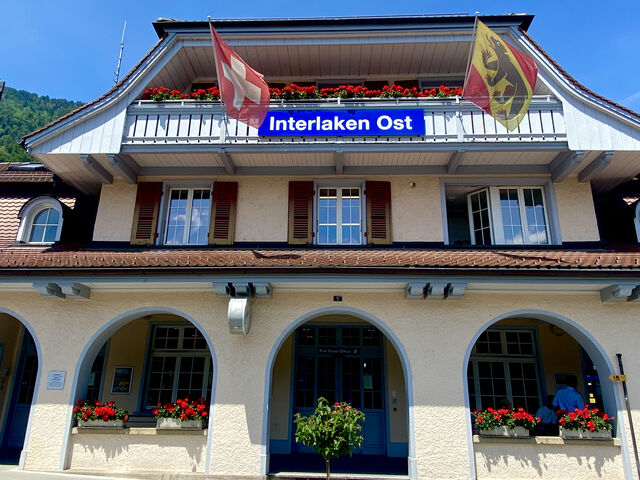Introduction to my train route through Switzerland
In June 2023 I had one full day to explore Switzerland by train. While any right-minded rail enthusiast will be puzzled by this decision to only spend one day in Switzerland, it is my intention to return in the next couple of years and take the two railway journeys that have always been at the top of my train wish list: the Glacier Express and the Bernina Express. Ideally, I hope to take these trips at the end of winter when the landscape is still covered in snow, but the days are a little longer. My future railway journey in Switzerland will also ideally include a trip on the Brienz Rothorn Railway and the Wengernalp Railway between Kleine Scheidegg and Grindelwald.1 But all of this of course, will have to wait for a future post. For now, let me tell you about my one day adventure on the GoldenPass Line.
I had initially planned to spend my one day in Switzerland in Zurich. I soon realised, however, that everything shuts down in Switzerland on Sundays, including all stores and supermarkets. I therefore made the most of my full day in the country by purchasing a day ticket which allowed me to travel on as many trains as I liked. I took advantage of this ticket, riding 7 different trains around the country between 7AM–10.30PM. The long day light hours were ideal and meant that less than 1 hour of my return trip to Zurich was undertaken in darkness. The below map shows my route through Switzerland.
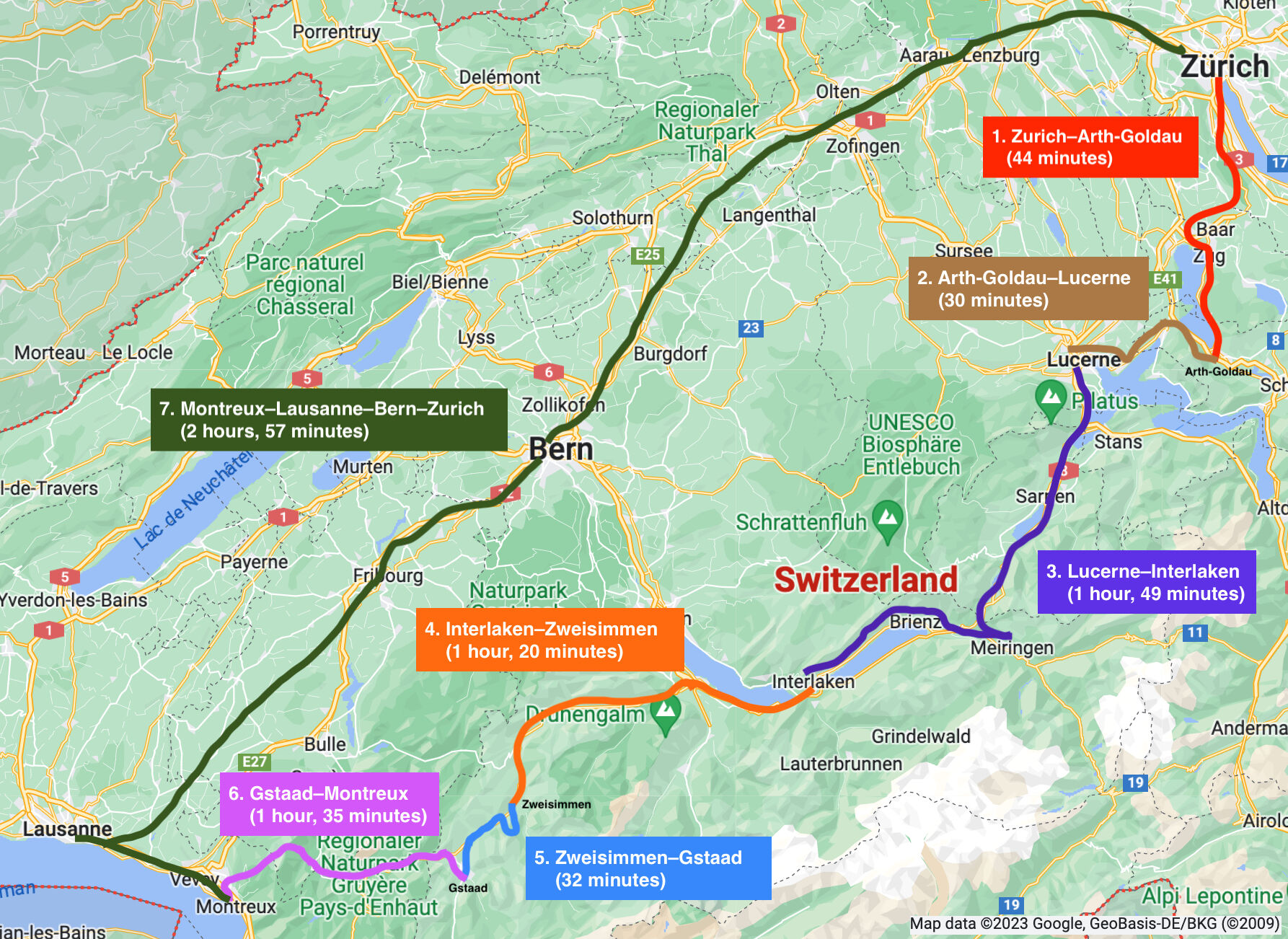
My guidebook for the trip was Anthony Lambert’s “Switzerland: A guide to exploring the country by public transport” (2023, 7th edn, Brandt Travel Guides).
I enjoyed travelling on a first class ticket for the whole day. There was one specific train I was taking—the Belle Époque train—where I had planned to upgrade to a first class ticket to experience the train’s special first class carriage. However, it soon became clear that it was only going to cost an extra 7 CHF to upgrade to a first class ticket for the entire day. This was the best decision I could have made. As the images below will show, the first class carriages were almost empty on all of the trains that I took. This allowed me to easily move around the carriages, taking pictures out each side of the train. By contrast, the second class carriages on some of the trains were absolutely packed with tourists (especially on the Lucerne–Interlaken and Zweisimmen–Montreux routes). There were scores of people standing in the aisles with their luggage and it would have been a struggle to secure a seat, let alone an all-important window seat.
Zurich
I awoke early in Zurich due to some slight jet lag and enjoyed walking around the city’s very quiet old town on a Sunday morning for 2 hours or so. The below images show some of the sights.
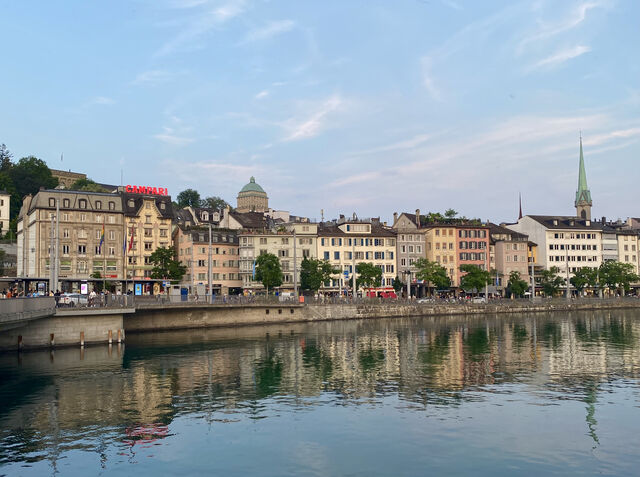
Limmat River

Walking along the Limmat River

Münzplatz

Bahnhofstrasse: Zurich's most expensive shopping street
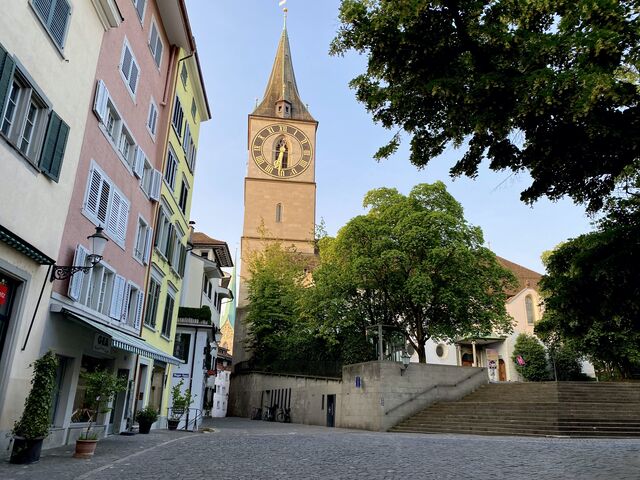
St. Peter's Church, constructed in the 13th century

View of the Limmat River from Lindenhof Hill
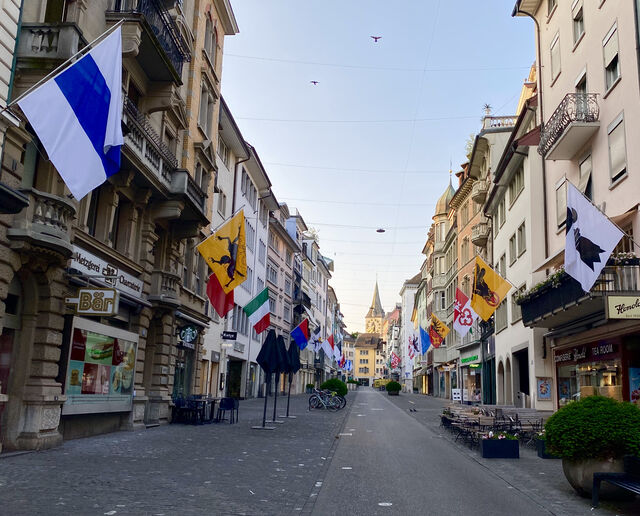
Rennweg: a medieval street in Zurich's pedestrianized zone
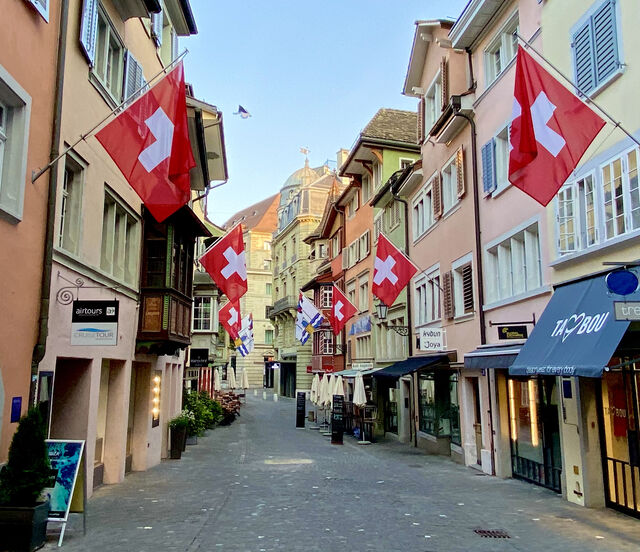
Augustinergasse: a medieval lane in Zurich's old town
Zurich–Lucerne (via Arth-Goldau)
At 7AM I made my way to Zurich’s main train station to commence my 15-hour train adventure.
As I had a day ticket, I was free to catch any train I wanted without having to make a reservation. At 7.30AM I boarded my first train from Zurich to Lucerne. Now what I am about to tell you is extremely important. Railway enthusiasts should be aware that it would be ill-advised to book a regular train ticket from Zurich–Lucerne which travels via the default (and fastest) route between these cities. Instead, what you want to do is book your ticket via Arth-Goldau. This more scenic route adds about 30 minutes to the journey but as the pictures below show, this detour is absolutely worth it. The train travels around the eastern side of the Zugersee (Lake Zug), providing marvellous views of the lake and surrounding mountains. The best views are on the right side of the train.
Approximately half-way between Zurich and Arth-Goldau the train passed through Zug which my guidebook described as ‘one of Switzerland’s loveliest and largely pedestrianised old towns’.
I had to change trains at Arth-Goldau Station. From here, one can travel on the Arth–Rigi Railway—Europe’s first mountain railway—to the summit of Rigi Kulm. When this railway commenced operation over 150 years ago, some feared that the new rack and pinion technology would be unable to pull the train up the precipice, and safety fears initially dissuaded tourists from using the mountain railway.2 Having not realised that this mountain railway was so easily accessible from Arth-Goldau Station, I was delighted to stumble upon the train while waiting for my connecting service to Lucerne. I was very tempted to change my travel plans for the day and ride the mountain railway instead. I chose, however, to continue on with my journey towards Lucerne and the GoldenPass line. While at Arth-Goldau Station I also spotted the Voralpen Express which is a fairly well-known scenic train. It crosses the Sitter Viaduct which is the highest railway bridge in Switzerland.
Leaving Arth-Goldau, the best views were on the left of the train. I accidentally sat in the second class carriage for this portion of the trip but did not feel the need to move to first class. The second class carriage was clean, spacious, and very quiet as it was still quite early in the morning.
The third image above shows Astrid Chapel in the village of Küssnacht. The Chapel was built in memory of Queen Astrid—the Queen of Belgium and Princess of Sweden—who died in a car accident in this village in 1935.
Lucerne
I arrived in Lucerne just before 9AM and had a little over 3 hours to explore the city. The train station is right in the centre of the very walkable city and I found 3 hours was just enough time for me to see everything I wanted to see. Of course, if you are interested in experiencing the city more fully you should break up your train travel and stay for a number of days, but for me, my focus on this trip was experiencing the train routes rather than the places en route.
I particularly enjoyed visiting Lucerne’s famous Chapel Bridge which crosses the Reuss River. The bridge contains a number of interior paintings dating back to the 17th century.
The first image below shows the Baroque Jesuit Church on the Reuss River. The second image shows Hotel Château Gütsch on the hill overlooking the city. The hotel was modelled after Neuschwanstein Castle in Bavaria, Germany.
I also enjoyed visiting Lucerne’s old city walls. My guidebook informed me that the Musegg Wall and its towers were built between 1350–1408. I enjoyed walking along the historic fortifications.
Other sites I visited in Lucerne are pictured below. The third image shows Weinmarkt: a famous square in Lucerne that was a fish market until the mid-16th century. After that, it was a marketplace for wine. The fountain is from 1481.
After an enjoyable few hours in Lucerne, I boarded the first segment of the GoldenPass route. The GoldenPass line runs between German-speaking Lucerne and French-speaking Montreux, having opened in stages between 1901–1916.
Introduction to the GoldenPass Railway
The route traditionally consists of three different sections: (1) Lucerne to Interlaken; (2) Interlaken to Zweisimmen; and (3) Zweisimmen to Montreux. The change in Zweisimmen was historically necessary due to the railway switching between track gauges due to the mountainous terrain. However, in December 2022, an innovative ‘GoldenPass Express’ service was introduced, allowing passengers to travel from Interlaken to Montreux without changing trains in Zweisimmen. This special train can switch from standard gauge (between Interlaken–Zweisimmen) to narrow gauge (between Zweisimmen–Montreux).
Different railway companies operate on the GoldenPass line. Between Lucerne and Interlaken the Luzern-Interlaken Express operates. This is a modern train with large panoramic windows. Between Interlaken and Zweisimmen regular commuter trains operate (or, from December 2022, the GoldenPass Express). Between Zweisimmen and Montreux passengers can choose between the GoldenPass Belle Époque and the GoldenPass Panoramic train (or, from December 2022, the GoldenPass Express). I chose to break my journey up in the following way:
- Lucerne–Interlaken (Luzern-Interlaken Express)
- Interlaken–Zweisimmen (Regular commuter train)
- Zweisimmen–Gstaad (GoldenPass Panoramic)
- Gstaad–Montreux (GoldenPass Belle Époque)
The GoldenPass (Part I): Lucerne–Interlaken
In my opinion, the trip between Lucerne and Interlaken along the Brünig railway line was the most scenic section of the GoldenPass route. The railway passes several lakes and travels over the impressive Brünig Pass. It is best to sit on the right side of the train for the most impressive views. Once again, the first class carriage was relatively empty.
After departing Lucerne (Central Switzerland’s most populous city), the train travelled along the banks of Lake Lucerne and the foot of Mount Pilatus. Some travellers alighted at Alpnachstad Station from where the Pilatus Railway travels to the summit of Mount Pilatus. I will have to return to experience this rack railway on a future trip.
After rolling past farmland and more historic churches, the train arrived in Sarnen—the capital of the canton of Obwalden—which is situated on the northern shores of Lake Sarnen.
The train then pulled into the picturesque Giswil Station on the southern end of Lake Sarnen.
From here, the train started to climb to the Brünig Pass which connects the municipalities of Lungern and Meiringen. My guidebook informed me that during this section of the route, the track is equipped with the Riggenbach rack system to deal with the steep gradients.
The above images show Giswil’s Catholic Church, built between 1630 and 1635, which stands on a mound once occupied by a castle. As the train continued to climb, the steep ascent provided marvellous views over the turquoise waters of Lake Lungern. This was the most stunning section of the route.
The train then passed through the village of Lungern which lies at the foot of the Brünig Pass, in the highest part of the canton of Obwalden. Visible in the below images is the impressive Church of the Sacred Heart of Jesus which was constructed in 1893. Lungern’s original church was destroyed in a severe thunderstorm in 1887. I spotted the remnants of the old church tower (Alter Kirchturm) which was constructed in 1383 a few minutes before the train passed the current church (see a few images above).
After passing the summit station of Brünig-Hasilberg, the train descended into the valley of Aare. When the train reached the town of Meiringen, it had to reverse at the terminus station. Readers will recall that up until this point, the best views were on the right side of the train. Conveniently, from Meiringen onwards the best views are on the left. As I was already sitting on the right side, following the train’s reversal at Meiringen I was now seated on the left which meant I did not have to worry about changing seats. My guidebook informed me that the town’s name—‘Meiringen’—was bestowed on the 17th-century culinary creation which we now know as the ‘meringue’. In 1985, the people of Meiringen made the world’s biggest meringue, which had to be baked in a sauna and weighed 64kg.
The train followed the River Aare as it left Meringen and continued along the flat valley floor past orchards and towards the country’s cleanest lake – Lake Brienz. There were impressive views of Lake Brienz as the train approached the large expanse of turquoise water. My guidebook described it as ‘one of the loveliest views from a train in Switzerland’. Brienz is also the start of the mountain railway up Mount Rothorn which I hope to experience on a future trip to Switzerland.
As can be seen in the first image below, Brienz Station, located on the shores of the lake, has to be one of the world’s most beautifully situated train stations.
Approximately 20 minutes later, the train arrived in Interlaken Ost.
You can read about Part II of my GoldenPass Railway adventure here.

